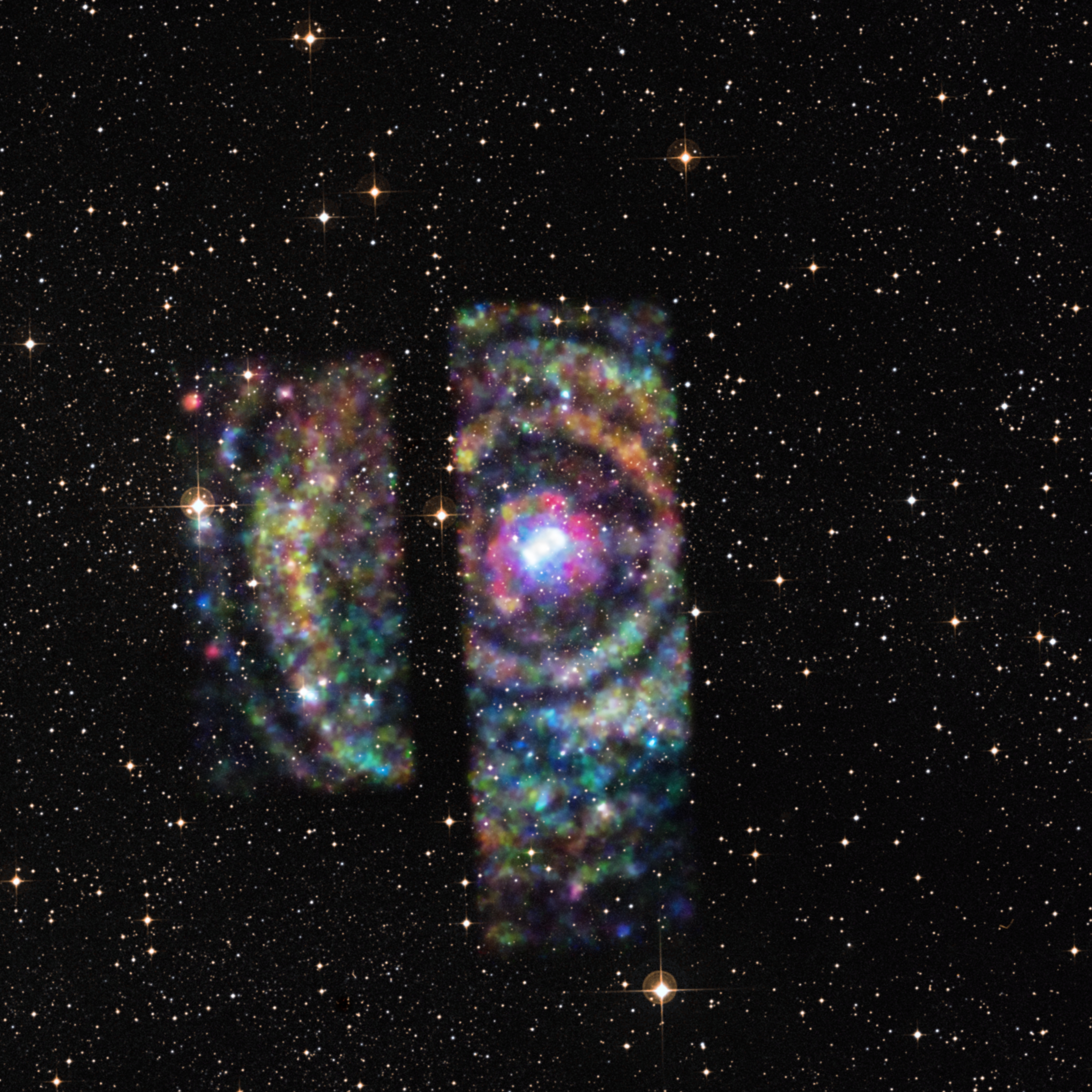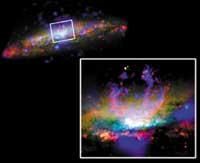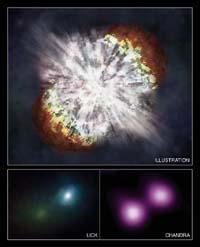Cosmic Echo X-rays, ring
2015/06/29 Carton Virto, Eider - Elhuyar Zientzia Iturria: Elhuyar aldizkaria

In the center Circinius X-1, a system formed by two stars and four giant rings around. The echo of an X-ray explosion is what appears in this spectacular image published by NASA. The explosion occurred in 2013 and now we can see it thanks to the Chandra telescope. In fact, Chandra receives x-ray signals.
The red, green and blue colors correspond to the X-rays of low, medium and high energy respectively. The rings are the echo produced by bouncing these rays against clouds of interstellar dust. Each ring corresponds to a different cloud. Seen from the earth, the closer the cloud is to us, the ring seems larger and the result is a concentric ring system. Specifically, its size ranges from 41 to 55 light years, so large that Chandra can not see them in full, so they appear cut.
Through the echo of x-rays, astronomers have been able to determine the Earth's distance from the Circinius X-1: 30.700 light years. To do this, they have combined the information received by Chandra with the collection previously by the Mopra radio telescope. Thanks to mopra, astronomers knew at what height each dust cloud of the Earth is, and the echo of X-rays has allowed calculating the distances between clouds and the Circinius X-1. The total sum has made it possible to know precisely the distance between the Earth and the Circinius X-1. So far there were great differences between some measures and others.
Circinius X-1 is a system of interest for astronomers to be a source of very strong high-energy particle jets. In the center has a neutron star, the core of a star destroyed in a supernova explosion, but its behavior is very similar to black holes. In fact, astronomers have confirmed that the speed of local particle jets is at least 99.9% of that of light, which is usually the property of black holes. “In some ways it behaves like a neutron star and in others like a black hole,” said Catherine Braiding of the University of New South Wales, one of the authors of the research, “it is very rare to find any object of these properties.” The results of the study have been published in the journal The Astrophysical Journal.

Gai honi buruzko eduki gehiago
Elhuyarrek garatutako teknologia






